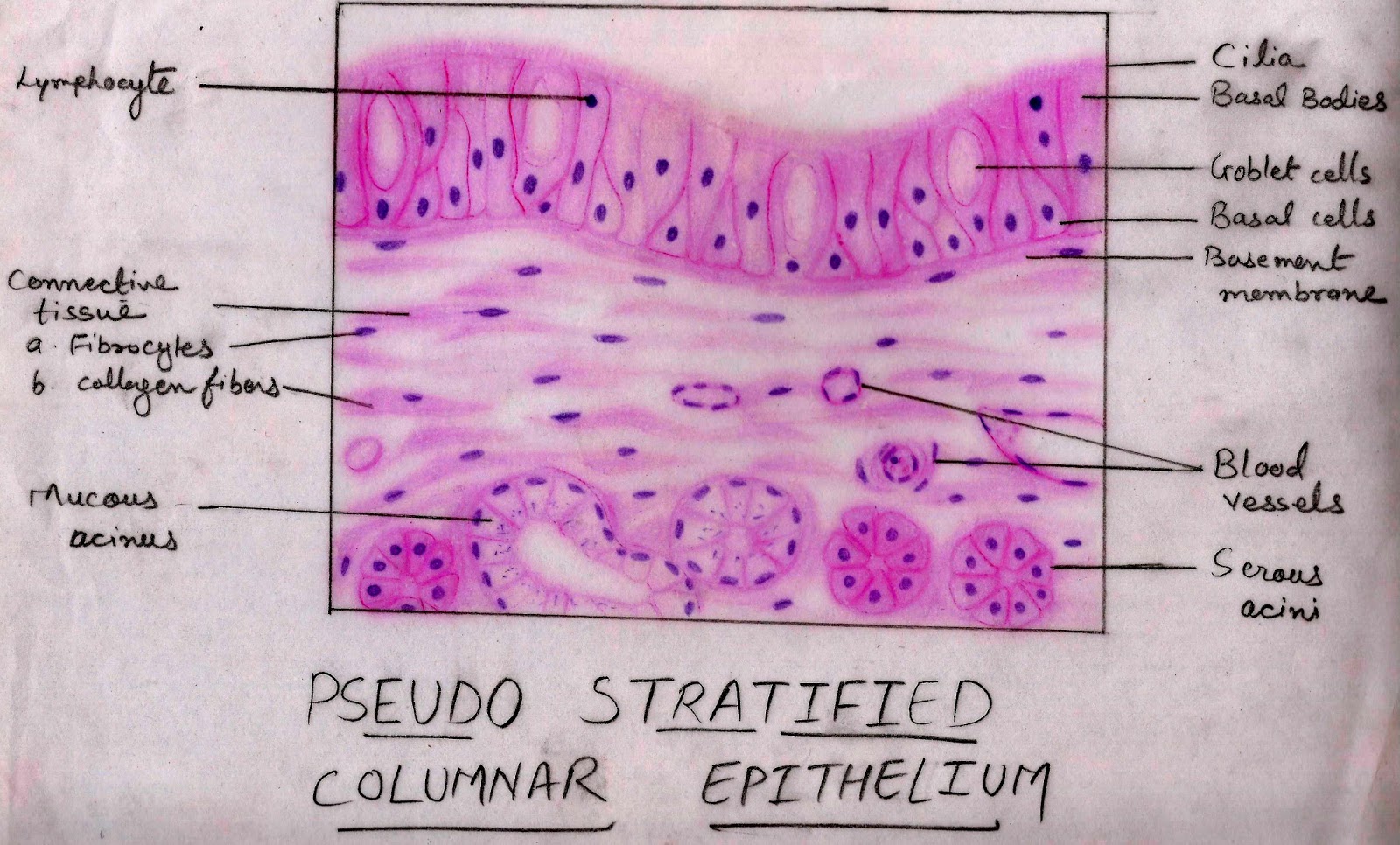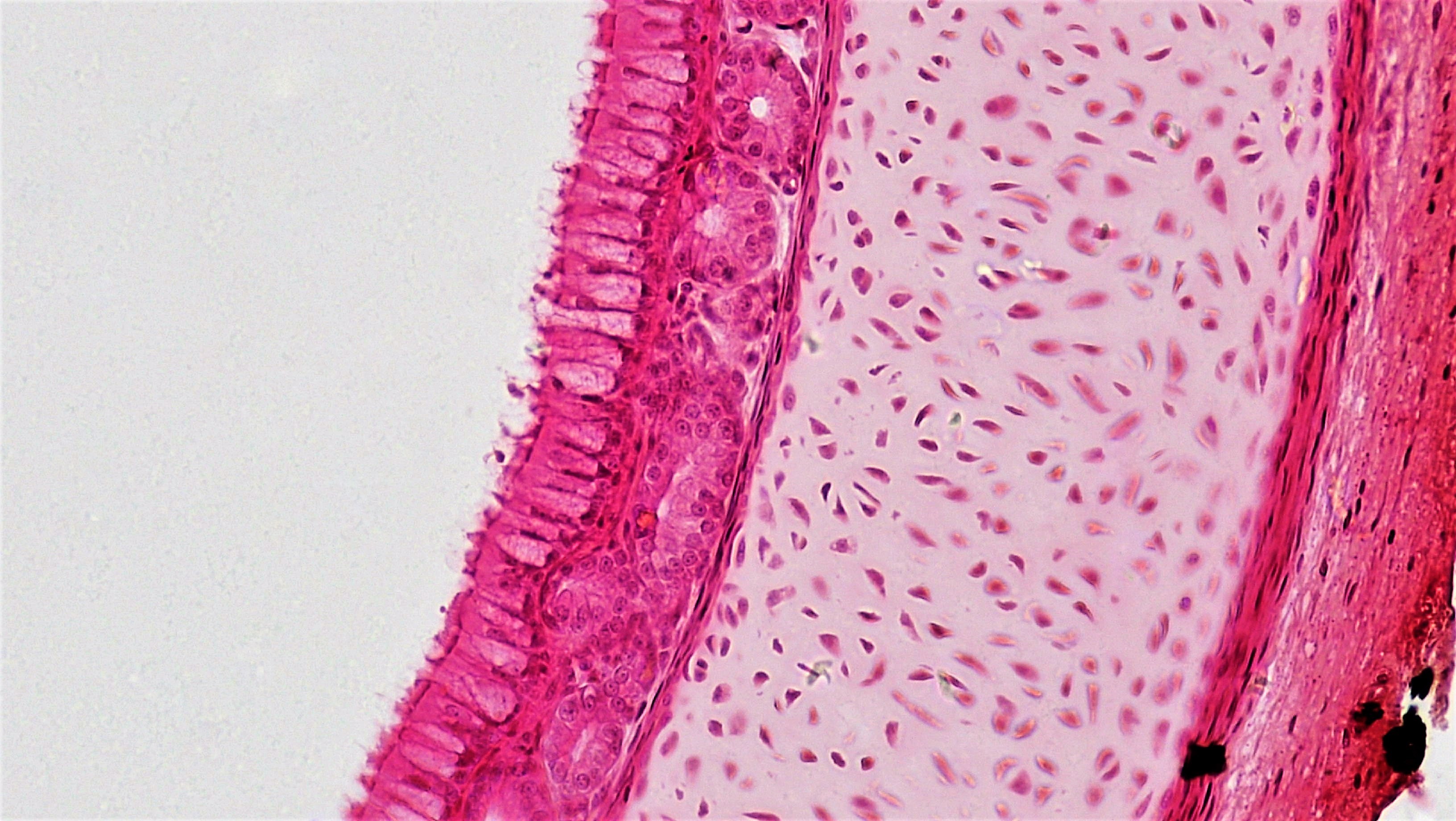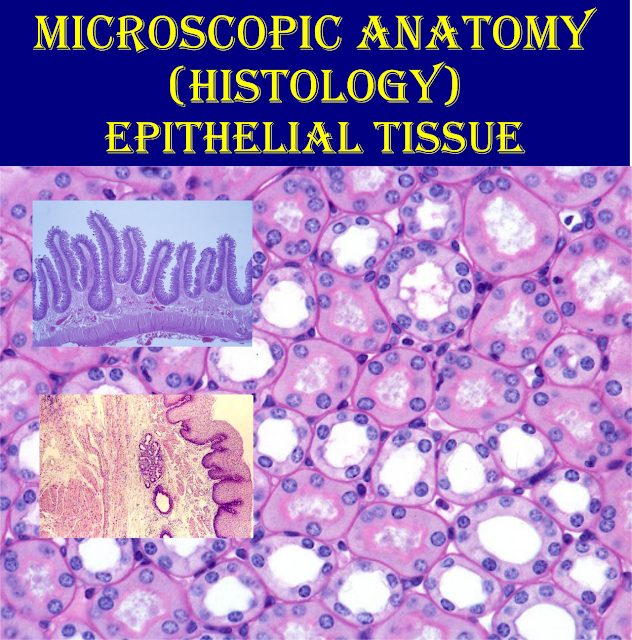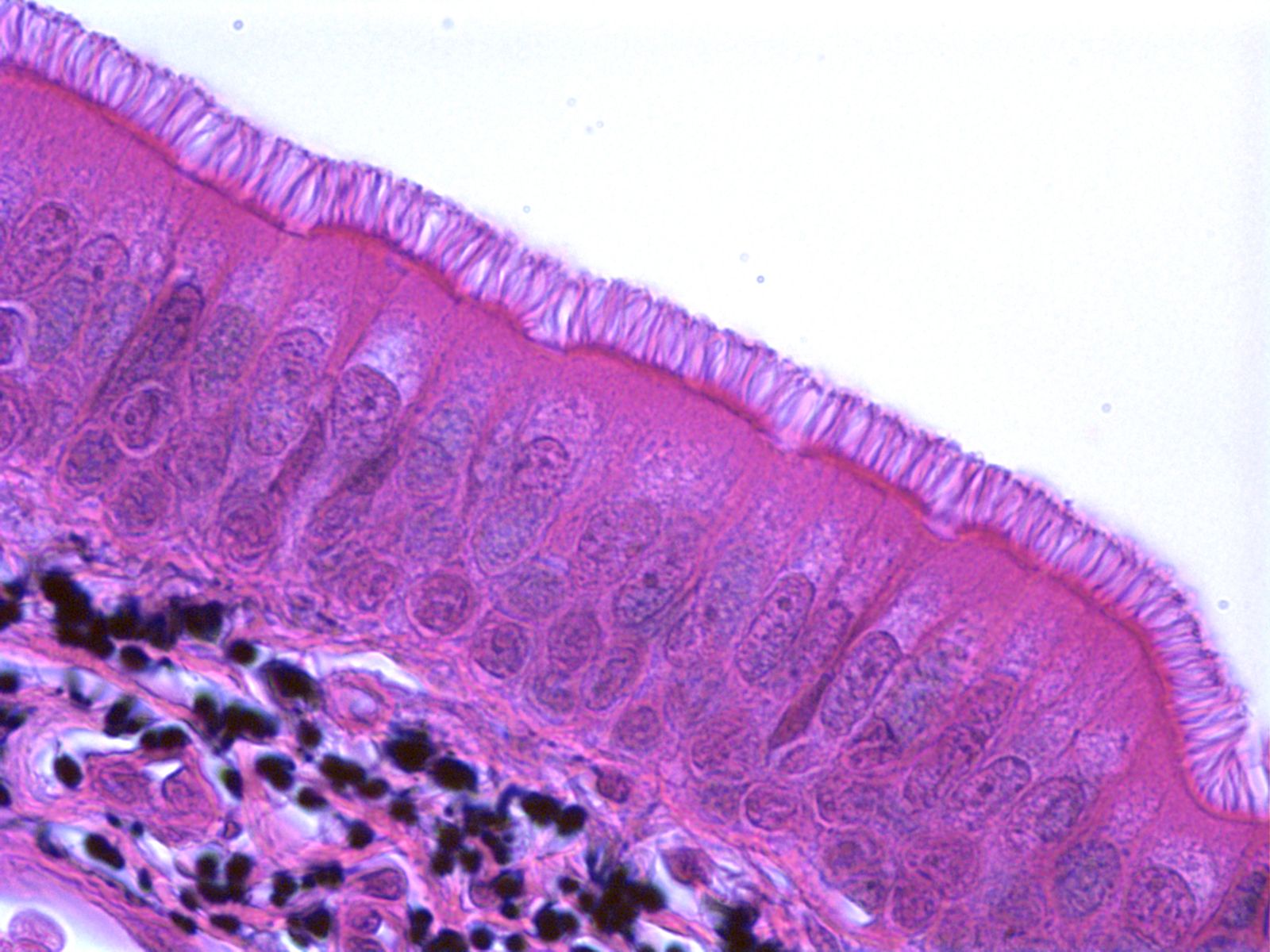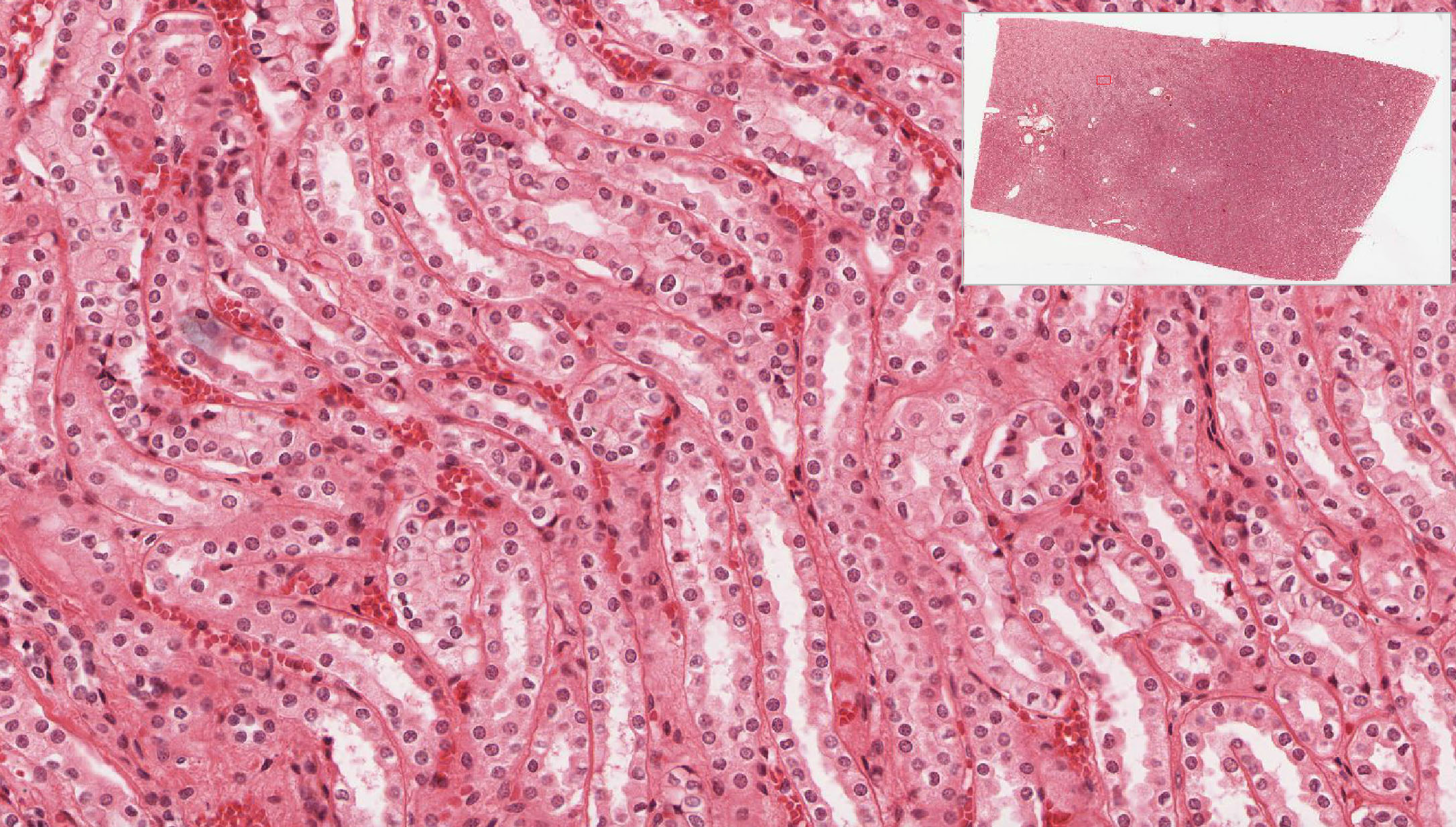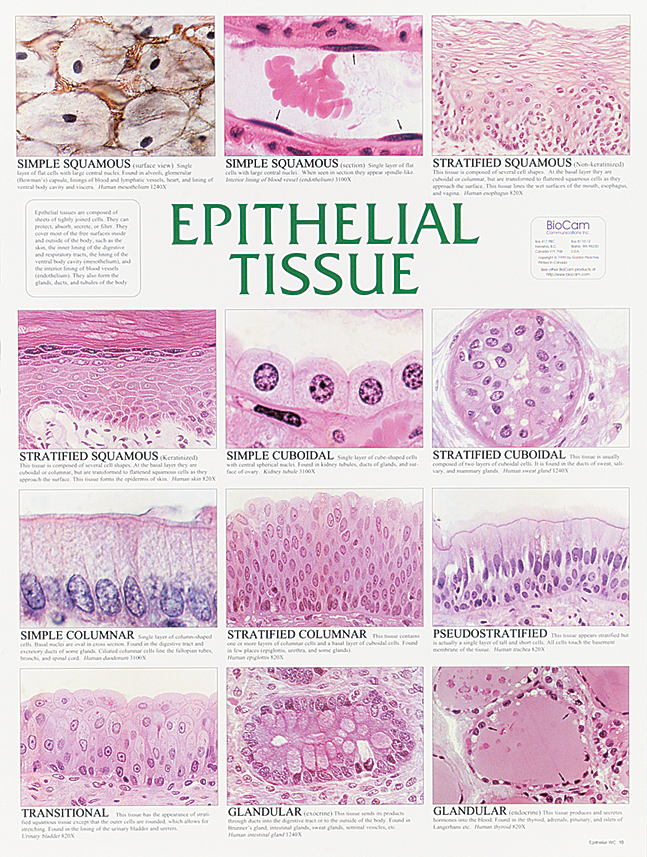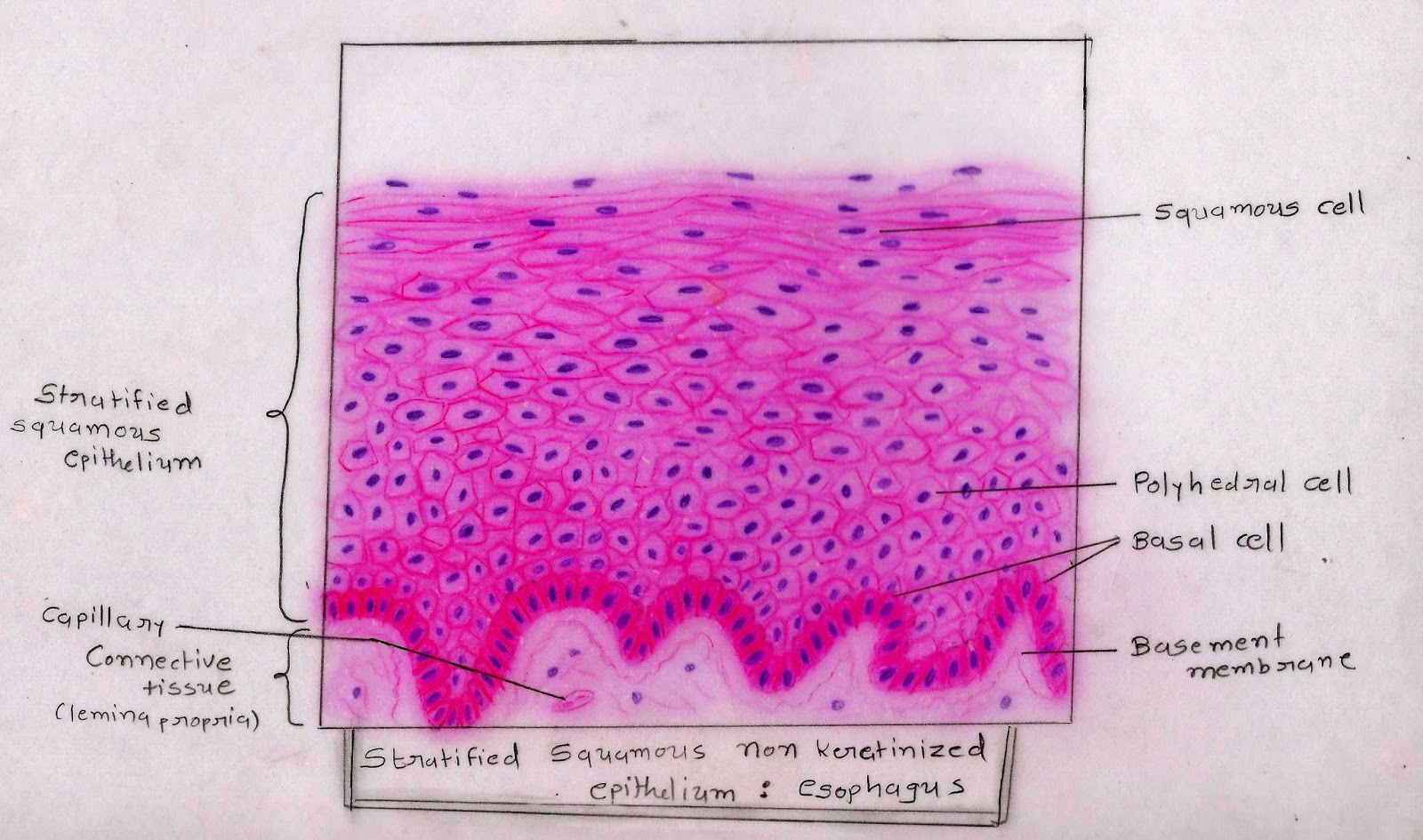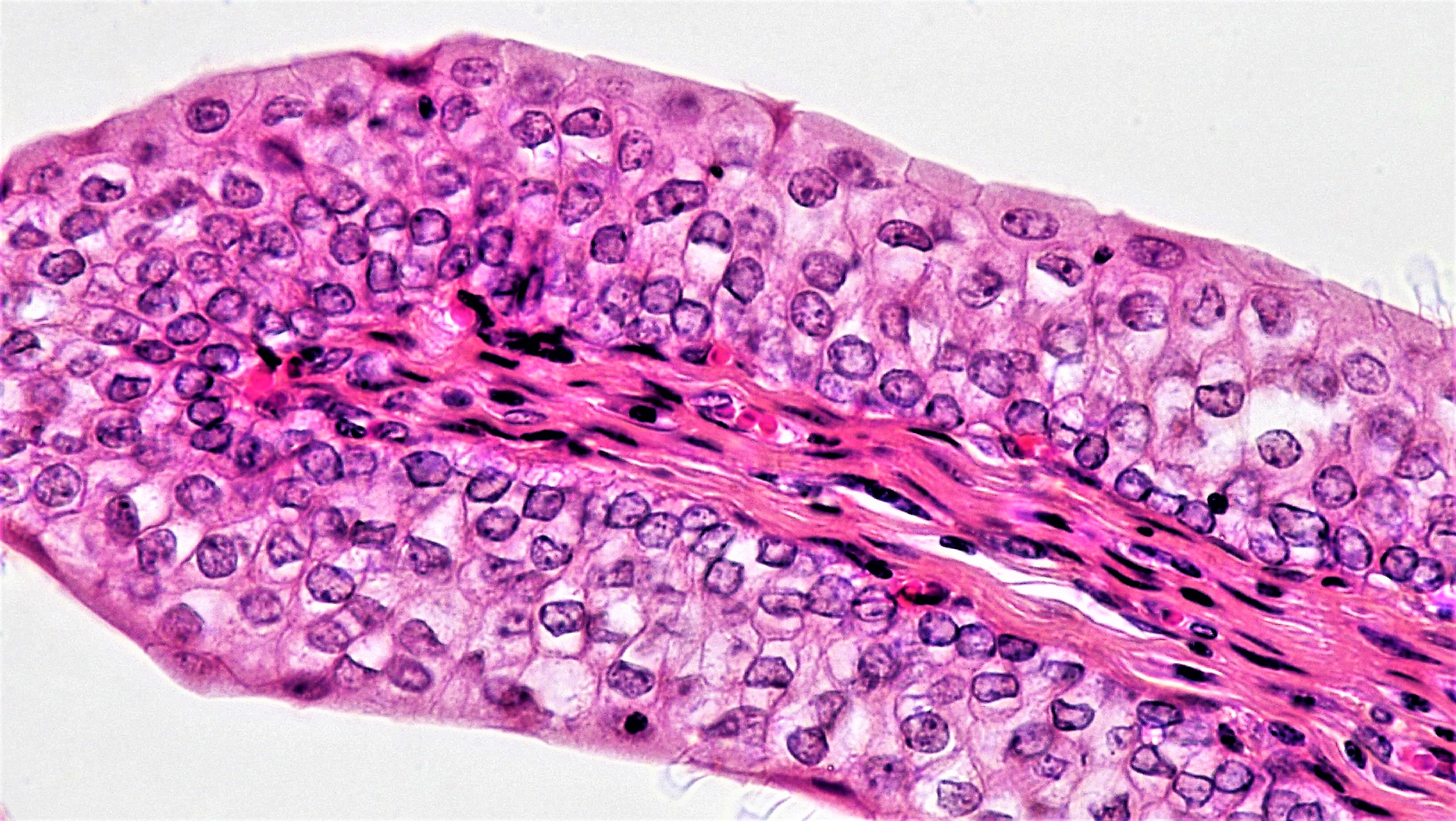Beautiful Info About Histology Epithelial Tissue Easter Flashcards Printable

In slide 29 and slide 176, this type of epithelium lines the luminal (mucosal) surface of the small and large intestines, respectively.
Histology epithelial tissue. Pseudostratified epithelium is a type of simple columnar epithelium. Types of epithelial tissue simple. Practice in identifying different types of tissues
Explain the characteristics that distinguish epithelial tissues from other basic tissue types. It is termed “pseudo” because,. Simple epithelium consists of one layer of epithelial cells lying on a basement membrane.
O classify morphological types of epithelia based on the number of cell layers, shape of apical cells, and presence of surface specializations o describe the structure of microvilli, cilia, and other apical specializations of epithelial cells It is a selective barrier that protects tissues and is often involved in absorption or secretion. A basement membrane separates the epithelium from underlying connective tissue.
List the epithelial tissue types and give examples of sites where each may be found. Basics of microscopy cells and tissues 4 tissue types epithelia connective tissues muscle tissues nervous tissues organs and organ systems integument cardiovascular blood lymphoid system respiratory system endocrine system urinary system female genital system male genital system virtual slides linked to in this virtual lab come from. Epithelial cells make up primary tissues throughout the body.
Epithelial tissue epithelial tissue can cover external surfaces , line the inside of hollow organs or form glands. Epithelial cells form from ectoderm, mesoderm, and endoderm, which explains why epithelial line body cavities and cover most body and organ surfaces. There are four main histological layers within the respiratory system:
Know the structure and function of junctions. Epithelial tissues are tissues that cover all exposed surfaces of the body including the external surface of the skin (epidermis) and the inner lining of all passageways, tubes, and chambers within the body. Epithelial tissue serves two main functions in the body.
Histology guide © faculty of biological sciences, university of leeds | credits Describe the five types of epithelial intercellular junctions. It is composed of densely packed epithelial cells with only a little extracellular matrix (ecm).
Epithelial cells form from ectoderm, mesoderm, and endoderm, which explains why epithelial line body cavities and cover most body and organ surfaces. Cells in epithelia each have an apical side facing the sheet’s free surface and a basal side facing a basement membrane and underlying connective tissue. Be able to classify epithelial tissues.
Differentiate among the various cell shapes seen in epithelial tissue. Epithelium forms continuous sheets of cells that line internal surfaces and cover the external surface of the body. Know the structure of apical specializations and their functions.
[1] there are many arrangements of epithelial cells, such as squamous, cuboidal, and columnar, that. Of particular note, epithelial tissue that lines vessels in the lymphatic and cardiovascular systems is called endothelium whereas epithelial tissue that forms the serous membranes lining the true cavities is called mesothelium. It acts as a selective barrier that protects tissues.
